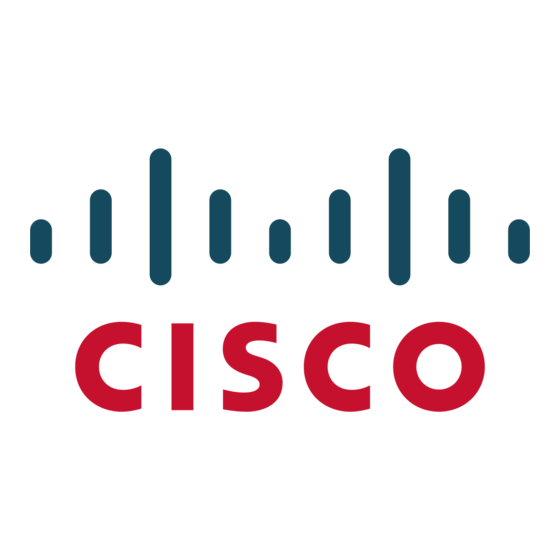SIP
MGCP
Y
N
Y
N
Y
N
Y
Y
Y
N
Y
N
N
Y
Y
Y
N
Y
N
Y
13
Y
Y
Y
-
16
Y
Y
Y
N
Y
N
Y
N
Y
N
Y
Y
Y
-
Y
-
Y
-
11
Requires Cisco IOS Software Release 12.3(14)T or later; BRI operations limited: single B-channel voice only; testing limited to
three phones; no data call support
12
Requires Cisco IOS Software Release 12.4(2)T or later
13
Requires Cisco IOS Software Release 12.4(15)T or later and Cisco Unified Communications Manager 5.0 (line-side) or later;
Cisco Unified Communications Manager trunk-side support currently not available
14
Requires Cisco IOS Software Release 12.4(3) or later and Cisco Unified Communications Manager 4.1 or later
15
Requires Cisco IOS Software Release 12.4(6)T2 or later and Cisco Unified Communications Manager 5.0 or later
16
Requires Cisco IOS Software Release 12.4(6)T or later and Cisco Unified Communications Manager 5.0 or later
17
Requires Cisco IOS Software Release 12.4(3) or later and Cisco Unified Communications Manager 4.1 or later
18
Requires Cisco IOS Software Release 12.4(6)T1 and Cisco Unified Communications Manager 5.0 or later
© 2013 Cisco and/or its affiliates. All rights reserved. This document is Cisco Public Information.
H.323
Feature
Y
Voice + Data integrated access
Y
Fractional PRI
Y
FXO tone answer supervision
Y
FXO disconnect supervision
Y
ISDN video switching on gateway (drop DSPs)
Y
Set numbering plan type of outgoing calls
N
Billing granularity to DS-0 channel level on Cisco Unified
Communications Manager CDR
Y
Name display on PRI using FACILITY IE (caller name
[CNAM])
11
N
Secure Telephone Unit (STU) and Secure Terminal
Equipment (STE) phone support
12
N
Connection to Defense Switched Network (DSN)
14
15
Y
Secure Real-Time Transport Protocol (SRTP): Media
authentication and encryption on unified communications
routers
-
SRTP-Real-Time Transport Protocol (RTP) fallback
operations
17
18
Y
Signaling encryption SIP: Transport Layer Security (TLS),
MGCP/H,323: IP Security IPsec)
Y
H.320 video gateway support
Y
Virtualization (Virtual Route Forwarding [VRF])
N
IPv6
N
Dynamic Host Configuration Protocol (DHCP)
Y
Resource Reservation Protocol (RSVP) support
-
History Info support
-
SIP privacy and identity
-
Signaling health monitoring
Benefits
This feature makes the voice and serial data interfaces
available on the same T1/E1.
This feature allows for use of fewer than 23/30 channels
on a T1/E1. Other channels are either unused or used for
data.
This feature facilitates the use of tones to signal
answering a call and the start of a CDR.
This feature makes battery reversal or tones available for
use to disconnect FXO calls.
This feature allows ISDN-based videoconferencing
systems to connect and be switched back out the ISDN.
You can change the numbering plan on the gateway
before your call goes out over the PSTN.
This feature provides increased granularity on TDM
usage down to the individual channel.
This feature provides caller name display on IP phones
for PSTN calls.
STU and STE support the U.S. Department of Defense
analog and BRI secure phones.
This feature supports the U.S. Department of Defense
private TDM network.
This feature enables secure gateway-to-gateway calls
and secure IP phone-to-gateway calls.
This feature enables the fallback from SRTP to RTP
during capabilities negotiation at the time of call setup.
This feature encrypts signaling communication between
unified communications and Cisco Unified
Communications Manager.
This feature integrates ISDN trunks with both voice and
video traffic.
This feature supports virtual segmentation of the network
using VRF.
IPv6 support enables interworking with IPv6-capable
networks.
DHCP enables acquisition of gateway configuration
parameters from the DHCP server.
This feature helps assure high-quality voice by enabling
resource reservation for call admission control.
This feature enables support for the History Info header
to transport the history information of a call.
This feature enables transport of identity, both preferred
(P-Preferred Identity [PPI]) and asserted (P-Asserted
Identity [PAI]).
This feature enables monitoring of the signaling
connection across the signaling trunk.
Page 8 of 20

